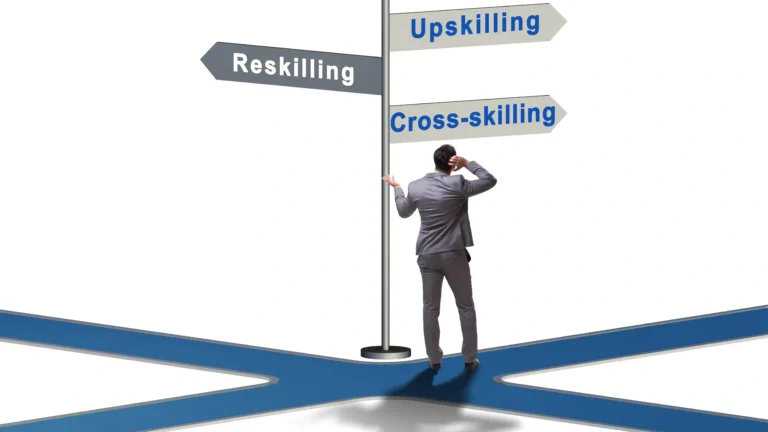It is said that change is the only constant in life, and this is certainly true in the modern business world. As technological advancements transform industries at an unprecedented rate, organizations are confronted with the challenge of adapting to these changes to remain competitive. This includes the task of ensuring their workforce is equipped with the right technical skills, needed to navigate this evolving landscape. This process, known as re-skilling, has become a vital strategy for companies looking to future-proof their operations.
The Relevance of Re-Skilling in a Digitally Transformed World
In the face of digital transformation, nearly every profession has experienced a significant shift in the skills required. From automotive technicians using tablets for diagnostics to librarians leveraging computerized networks to connect patrons with global resources, the impact of technology on job and core skills profiles is obvious. Consequently, companies are compelled to transform their workforce skills to keep pace with these changes.
According to the World Economic Forum, by 2025, up to half of all employees will require re-skilling due to technological advancement. Similarly, Gartner’s research suggests that 58% of the workforce will need to develop entirely new skills or skill sets to perform their jobs successfully. These statistics underscore the urgency of re-skilling in the current job market.
Re-Skilling and Upskilling: Two Sides of the Same Coin
While both re-skilling and upskilling are integral to talent development, they serve different purposes. Re-skilling involves learning new skills to perform a different job, while upskilling entails enhancing existing skills or acquiring new skills gap the ones relevant to a person’s current job. Both strategies are effective in combating the perennial skills shortage projected to intensify in the coming years.
The Economic Argument for Re-Skilling Over External Hiring
For decision-makers, the question might arise, why re-skill existing staff instead of hiring new employees already equipped with the company’s ability and required skills? The answer lies in the numerous benefits of internal talent development. Long-term employees possess a deep understanding of the company’s culture, clients, customers, and partners—an asset that cannot be immediately replicated by new hires.
Moreover, the recruitment and training process for new employees can be lengthy and expensive. According to Workable, it could take up to eight months for a new employee to become fully productive. A study by the Association for Talent Development (ATD) found that companies offering comprehensive training had more than double the income per employee compared to firms offering less training. Therefore, fostering a culture of upskilling and re-skilling is a cost-effective strategy for companies preparing workers for the future.
The Role of Career Pathing in Re-Skilling
One practical way to introduce re-skilling and upskilling in an organization is through career pathing. This process involves charting a course for an employee’s personal career development and aligning individual and career path aspirations with the organization’s business objectives. A successful career pathing strategy is competency-based, allowing the organization to evaluate the specific competencies required for each role and understand the skills development needed for employees moving into new positions.
Implementing career pathing brings several advantages, including:
- Meeting future demand by developing key skills in the existing workforce.
- Identifying hidden skills among employees, revealing potential the business may not be aware of.
- Creating a culture of talent mobility, increasing motivation and retention levels among employees.
Implementing an Upskilling Program
According to LinkedIn Learning’s 5th Annual Workplace Learning Report, upskilling and re-skilling are top priorities for learning and development (L&D) professionals worldwide. Here are some steps to implement an effective upskilling and reskilling” program in your organization:
Build a Competency Map
Competency mapping is the first step in building a competency meter. It quantifies the skill set required for a certain job role and identifies areas of expertise that need improvement. Skill mapping also takes into account an employee’s aspirations, creating a balance between the organization’s needs and the employee’s interests.
Measure the Program’s Effectiveness
The Kirkpatrick Model is a globally recognized method for evaluating the results of training programs. It assesses both formal and informal training methods based on four levels of criteria: Reaction, Learning, Behavior, and Results. This model, coupled with an effective feedback and assessment tool, can help determine the exact ROI of the program.
Offer an Opportunity Marketplace
Once employees have gained new knowledge and skills through the upskilling program, organizations should provide opportunities for them to apply these skills to internal positions. This not only demonstrates the organization’s commitment to employee development but also fosters a culture of continuous learning.
Conclusion
In a rapidly changing business environment, re-skilling and upskilling are crucial strategies for preparing your workforce for future challenges. By investing in your employees, you not only equip them with the skills needed to excel in their current roles but also instill a culture of learning and growth that benefits the entire organization. Whether you choose to upskill, upskill and reskill them, or both, the investment in your employees is an investment in the future of your company.







